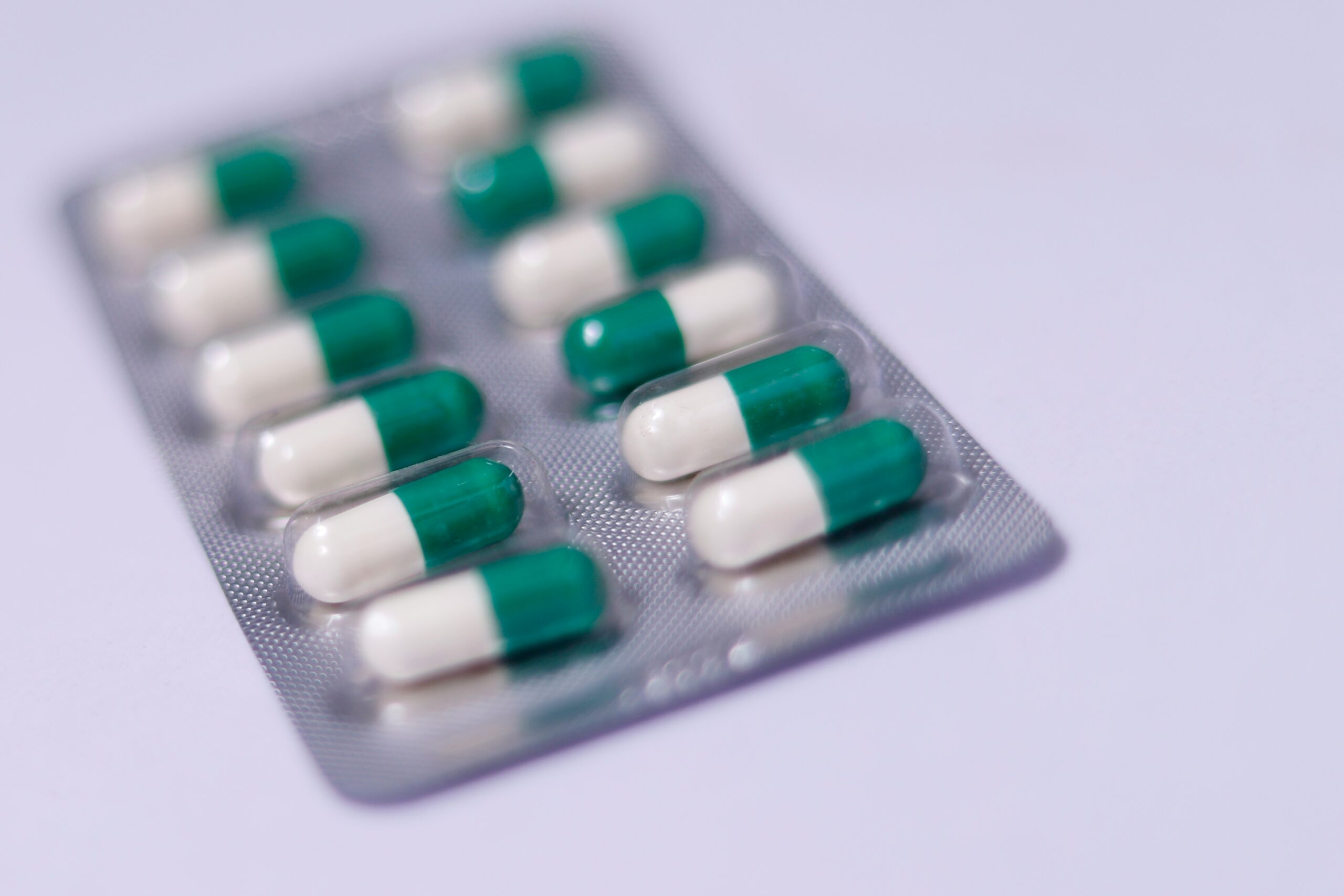Bacterial Vaginosis is a common intimate infection that occurs in women during sexual maturity. The condition is a consequence of quantitative disorders of the vaginal bacterial flora. The cause of the disease is an overgrowth of anaerobic bacteria displacing beneficial lactic acid bacilli.
An imbalance of the vaginal microflora can cause various unpleasant symptoms, but it can also be asymptomatic. The symptoms of bacterial vaginosis sometimes vary, and their severity can depend on multiple factors.
However, bacterial vaginosis should be treated, as an imbalance of the microflora of the reproductive tract can lead to other health complications. Each woman's case is different and should be consulted with a gynecologist, who will select the appropriate pharmacotherapy. Diagnosis confirmation of BV is based on tests that exclude other types of diseases of the genital tract. In the case of bacterial vaginosis, as with other intimate infections, prevention is also essential to protect against risk factors.

Bacterial vaginosis is a common infection in women of reproductive age worldwide. The leading cause of bacterial vaginosis is an overgrowth of the natural vaginal flora![]() . Therefore, The disease is caused by a decrease in the number of Lactobacillus
. Therefore, The disease is caused by a decrease in the number of Lactobacillus![]() bacteria or their complete disappearance. The result is an overgrowth of anaerobic bacteria, mainly Gardnerella vaginalis
bacteria or their complete disappearance. The result is an overgrowth of anaerobic bacteria, mainly Gardnerella vaginalis![]() , but this is not the only pathogen that causes bacterial vaginosis. There are many different bacteria in the vagina that can contribute to the infection.
, but this is not the only pathogen that causes bacterial vaginosis. There are many different bacteria in the vagina that can contribute to the infection.
A healthy vaginal microflora contains bacteria of the Lactobacilli species, which dominate its composition. These bacteria produce hydrogen peroxide, which has a destructive effect on microorganisms and protects the vagina from infection. A deficiency of these bacteria leads to a proliferation of anaerobic bacteria, which in low concentrations in the vagina are not harmful, but their proliferation can lead to infections. Some potential causes of bacterial vaginosis can increase the risk or directly contribute to disease. Causes include:

The process of spreading bacterial vaginosis is not yet fully understood. However, it is believed that sexual intercourse can affect the natural bacterial flora in the vagina by disrupting its balance. This, in turn, can lead to the development of BV. Anaerobic bacteria can spread between partners having sex through direct mucosal contact or shared erotic toys. Epidemiological data also show that bacterial vaginosis is more common in women who have had multiple sexual partners![]() and in women who started being sexually active at a young age
and in women who started being sexually active at a young age![]() .
.
Antibiotics are medical substances produced by bacteria and fungi to destroy other microorganisms. However, during antibiotic therapy, not only pathogenic organisms are eliminated, but also beneficial bacteria that are part of the human physiological bacterial flora, such as the colonies of probiotic Lactobacillus bacteria found in the vagina. The beneficial bacterial flora is the body's protective barrier, so harmful microorganisms and anaerobic bacteria proliferate when its balance is upset.
Hormonal changes can contribute to an imbalance of the vaginal microflora, and birth control pills contain the equivalent of female sex hormones in their composition. During hormonal contraception, Lactobacillus bacilli decreases, lactic acid secretion decreases, and pH increases, creating favorable conditions for bacterial vaginosis. It is also worth mentioning that women who use globules, gels, and other spermicidal preparations, i.e., chemical contraceptives, are at increased risk of developing intimate infections.

Smoking has several health consequences. Tobacco hurts ovarian cells and the vessels supplying the ovaries, leading to reduced estrogen secretion. The result can be reduced fertility in women of childbearing age, decreased libido, and earlier menopause. In addition, smoking negatively affects the natural state of the vaginal flora, increasing the risk of infection.
As mentioned, hormonal changes can affect the vaginal bacterial flora. Natural changes in hormone levels during menopause![]() or as a result of hormonal contraception contribute to a weakening of the natural bacterial flora in the vagina. This promotes the proliferation of pathogenic microorganisms and the development of infections.
or as a result of hormonal contraception contribute to a weakening of the natural bacterial flora in the vagina. This promotes the proliferation of pathogenic microorganisms and the development of infections.
A poor diet influences the development of intimate infections. The consumption of too many carbohydrates or simple sugars is of particular importance. Women's mucus is formed by substances carried along with the blood. If there are too many sugars in the blood, this results in an increase in glucose in the vagina. Glucose![]() changes the physiological pH of the vagina and provides a breeding ground for bacteria, which begin to multiply intensively, resulting in the development of infections. Consumption of simple sugars with the diet in women facing intimate infections should be kept to a minimum.
changes the physiological pH of the vagina and provides a breeding ground for bacteria, which begin to multiply intensively, resulting in the development of infections. Consumption of simple sugars with the diet in women facing intimate infections should be kept to a minimum.

Improper or insufficient hygiene can cause bacterial vaginosis and other infections. An imbalance of the microflora can be caused by washing the intimate area too often and infrequently. The choice of washing product is also of great importance. Preparations containing ingredients that have an irritating or allergic effect can contribute to developing infections. Douching![]() is also not recommended. Proper hygiene is essential during menstruation. Replacing tampons and sanitary pads too infrequently can increase the risk of bacterial vaginosis. Frequent hot baths are also not recommended.
is also not recommended. Proper hygiene is essential during menstruation. Replacing tampons and sanitary pads too infrequently can increase the risk of bacterial vaginosis. Frequent hot baths are also not recommended.
Frequent irritation of the vagina can lead to infections. Therefore, avoid irritants such as inappropriate intimate area gels or scented pads. Wearing appropriate underwear is also important. Panties that are too tight or made of irritating, unventilated materials can contribute to infection. Including thongs is not the best option, as they often irritate the delicate area of intimate places. Other garments, such as pants, jeans, or shorts, should also be tight and made of artificial materials. Avoiding highly aromatic, colorful, foamy bath cosmetics is also a good idea. The detergents they contain can irritate sensitive intimate areas and alter the pH value.
If you suffer from recurrent intimate infections, you should also think about avoiding saunas, hot tubs, swimming pools, and even tanning beds. The warm and wet environments are home to harmful pathogens that can contribute to intimate infections. In addition, the chemicals and detergents used at the swimming pool to keep the pool water clean hurt the skin and mucous membranes. Even more irritating is the use of hot tubs, where the hot water, combined with chemicals, weakens the protective barriers against reproductive tract infections.

In many cases, bacterial vaginosis produces no symptoms. Then, patients are at increased risk of other infections of the genital tract, and pregnant women have an increased risk of premature labor without being aware of it. Bacterial vaginosis can also give symptoms, which are as follows:
Bacterial vaginosis most often causes symptoms related to vaginal discharge. There is an increase in vaginal discharge. It also takes on a peculiar fishy smell![]() . The discharge frequently has a small thickness, is gray, is milky, or sometimes slightly greenish. Also, a pH value of vaginal discharge above 4.5
. The discharge frequently has a small thickness, is gray, is milky, or sometimes slightly greenish. Also, a pH value of vaginal discharge above 4.5![]() usually indicates the development of bacterial vaginosis.
usually indicates the development of bacterial vaginosis.
In bacterial vaginosis, vaginal discomfort and burning of varying severity may occur. In addition, there may be pain during urination and lower abdominal pain. Pain may also occur in the vulvar area when the labia minora are irritated.
In addition to pain and burning, patients with BV may also experience itching in the intimate area. Itching of the labia and vagina may be the only disease symptom of bacterial vaginosis. The itching can vary in intensity and is often bothersome and unpleasant.

In the course of bacterial vaginosis, redness may occur in the vagina or vulva. The redness results from irritating the mucous membranes with harmful pathogens and dryness. Another cause of redness, burning, and discomfort in the intimate area may be an allergic reaction. In addition to redness, the intimate area may also be swelling.
Dyspareunia is the term for soreness and pain during sexual intercourse![]() . People with bacterial vaginosis may experience painful intercourse, which affects the quality of sexual life. A bacterial vaginal infection is one of many causes that trigger pain during intercourse.
. People with bacterial vaginosis may experience painful intercourse, which affects the quality of sexual life. A bacterial vaginal infection is one of many causes that trigger pain during intercourse.
If you have noticed alarming symptoms, it is worth consulting a gynecologist since bacterial vaginosis can resemble and predispose to other intimate infections. Long untreated vaginosis can become complicated and cause numerous health complications. It is hazardous for pregnant women, as it is associated with premature labor and complications during pregnancy. Most intimate infections can be diagnosed based on characteristic symptoms and medical history. In addition, the following tests are performed when bacterial vaginosis is suspected:

The test measuring the pH of the vaginal environment is essential because, in bacterial infections, it usually changes from acidic to alkaline. Changes in the pH of vaginal secretions indicate an imbalance of bacterial microflora. In a woman of childbearing age, the normal vaginal pH is acidic and ranges between 3.6 and 4.5. Elevated pH may indicate a decrease in the beneficial lactic acid bacilli population.
Collection of a vaginal swab is performed for culture with an antibiogram or examination of a sample of vaginal secretions under a microscope. The primary test in the diagnosis of intimate infections in women is the microscopic evaluation of the vaginal microbiota. Microbiological examination will identify the pathogen that caused the disease. Bacteria and fungi or protozoa can cause infections in intimate areas in women. Therefore, diagnosing the cause of unpleasant discomfort is important so that the appropriate treatment can be adjusted.
Treatment of confirmed vaginosis involves acting with substances that act on Gram-negative bacteria. In addition, it is essential to replenish the bacterial microflora with Lactobacillus bacteria, which are responsible for forming a barrier that protects against the attack of pathogenic microorganisms.
In the case of bacterial vaginosis, therapy involves the use of appropriate preparations that contain active substances with antimicrobial activity. The selection of proper drugs is essential since anaerobic bacteria resist some antibiotics. Drugs for bacterial vaginosis are available in the form of oral agents and topically applied creams, gels, and vaginal globules.
It is also worth remembering that you should not interrupt the treatment recommended by a specialist on your own, even if the symptoms of the disease have disappeared. Current guidelines state that m***********e![]() and c*********n
and c*********n![]() are recommended first for effective treatment of bacterial vaginosis. In case of frequent recurrences, it is necessary to consider other therapies and determine the cause of frequent infections.
are recommended first for effective treatment of bacterial vaginosis. In case of frequent recurrences, it is necessary to consider other therapies and determine the cause of frequent infections.

The goal of treating bacterial vaginosis is not only to eliminate the pathogen but also to increase the population of bacteria responsible for forming a barrier against the attack of pathogenic microorganisms. Recent studies have demonstrated that gynecological probiotics containing certain Lactobacillus strains prolong the time of clinical recurrence of vaginosis. Strains such as Lactobacillus fermentum, Lactobacillus plantarum, and Lactobacillus gasseri are beneficial in restoring the vaginal bacterial flora. Probiotics can be administered orally or vaginally after antibiotic treatment. Prevention through lifestyle changes is also recommended for protection.
Untreated or diagnosed too late, bacterial vaginosis can lead to various complications. It is hazardous for pregnant women to ignore the problem. Complications of bacterial vaginosis include:

Bacterial vaginosis promotes other infections and diseases of the reproductive system. This group includes various types of intimate infections, such as fungal vaginal infections. In addition, there is a higher risk of sexually transmitted diseases![]() (chlamydia, gonorrhea, or HIV). In addition, untreated bacterial vaginosis promotes human papillomavirus infection HPV). Changes in the bacterial flora increase the likelihood of illness and disease, which is especially true for people with weakened immune systems.
(chlamydia, gonorrhea, or HIV). In addition, untreated bacterial vaginosis promotes human papillomavirus infection HPV). Changes in the bacterial flora increase the likelihood of illness and disease, which is especially true for people with weakened immune systems.
Untreated or diagnosed too late, bacterial vaginosis can lead to cervicitis in women. Cervicitis is associated with an initial local inflammation involving the entire cervical canal and sometimes the deeper layers of the cervical canal mucosa. The damaged cervix, in turn, promotes the migration of bacteria into the fallopian tubes and the uterus, thereby causing inflammation of the pelvic organs.
With bacterial vaginosis, there is an increased risk of miscarriage, early delivery![]() and low birth weight for pregnant patients. Bacterial vaginosis can also cause infections of the amniotic fluid. If you are pregnant and suspect vaginosis, immediately notify your healthcare provider, who will implement appropriate treatment.
and low birth weight for pregnant patients. Bacterial vaginosis can also cause infections of the amniotic fluid. If you are pregnant and suspect vaginosis, immediately notify your healthcare provider, who will implement appropriate treatment.
In extreme cases, bacterial vaginosis can cause fertility problems. Most intimate infections do not cause infertility, but some can lead to temporary issues getting pregnant. Bacterial vaginosis increases susceptibility to dangerous intimate infections that can affect fertility.

Wanting to avoid intimate infections, leading a generally healthy lifestyle is necessary. First of all, you should analyze your habits and notice what could be the cause of bacterial vaginosis. It is essential to practice safe sex, significantly if the patient frequently changes sexual partners. Regular gynecological examinations will also be helpful in this case.
In addition, it is advisable to reduce harmful habits such as smoking and to maintain a healthy and varied diet low in simple sugars. Hygiene is also crucial. It is advisable to wash the intimate area regularly with specially designed preparations. You should not use products that can violate the natural bacterial flora of the vagina. In addition, you need to remember to change hygiene products frequently during menstruation.
Mental health and stress reduction are important as they can weaken the immune system. They are leading a healthy lifestyle helps to weed out all risk factors, which can be helpful, especially if you have frequent recurrent infections.
Bacterial vaginosis is a disease resulting from an imbalance of bacterial flora in the vagina. In its course, there is a significant decrease in the population of Lactobacilli, accompanied by an excessive proliferation of pathogenic anaerobic bacteria, such as Gardnerella vaginalis. The imbalance between the bacteria of the vaginal ecosystem can have various causes. These include antibiotic therapy or improper hygiene.
Bacterial vaginosis is often asymptomatic. Symptoms of bacterial vaginosis can vary, and their severity can depend on various factors. Women most often notice changes in the appearance and intensity of vaginal discharge. Persistent symptoms include pain, burning, and itching in the intimate area. A gynecological examination and other additional tests, such as pH testing of vaginal discharge and microbiological testing, are essential in diagnosis.
The goal of treating bacterial vaginosis is not only to eliminate the pathogen but also to increase the population of bacteria responsible for forming a barrier against the attack of pathogenic microorganisms. In the case of bacterial vaginosis, therapy involves the use of antibiotics and probiotics. Long untreated vaginosis can become complicated and cause numerous health complications like an increased risk of sexually transmitted diseases.